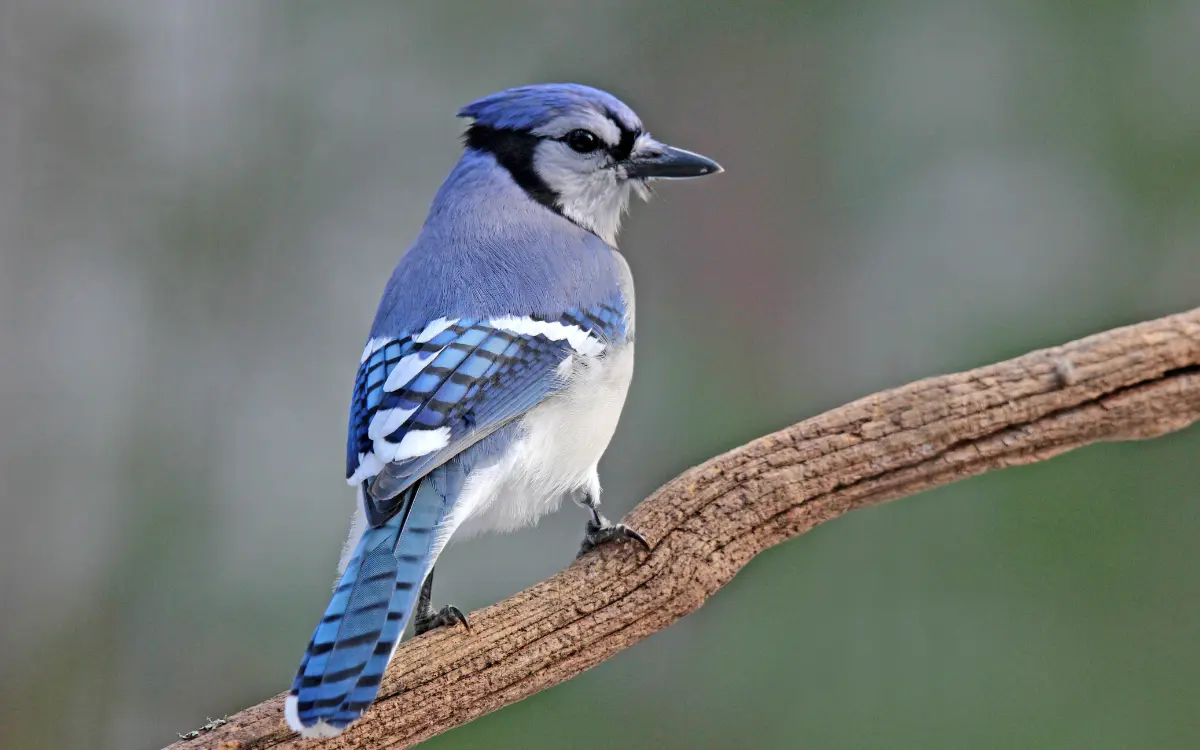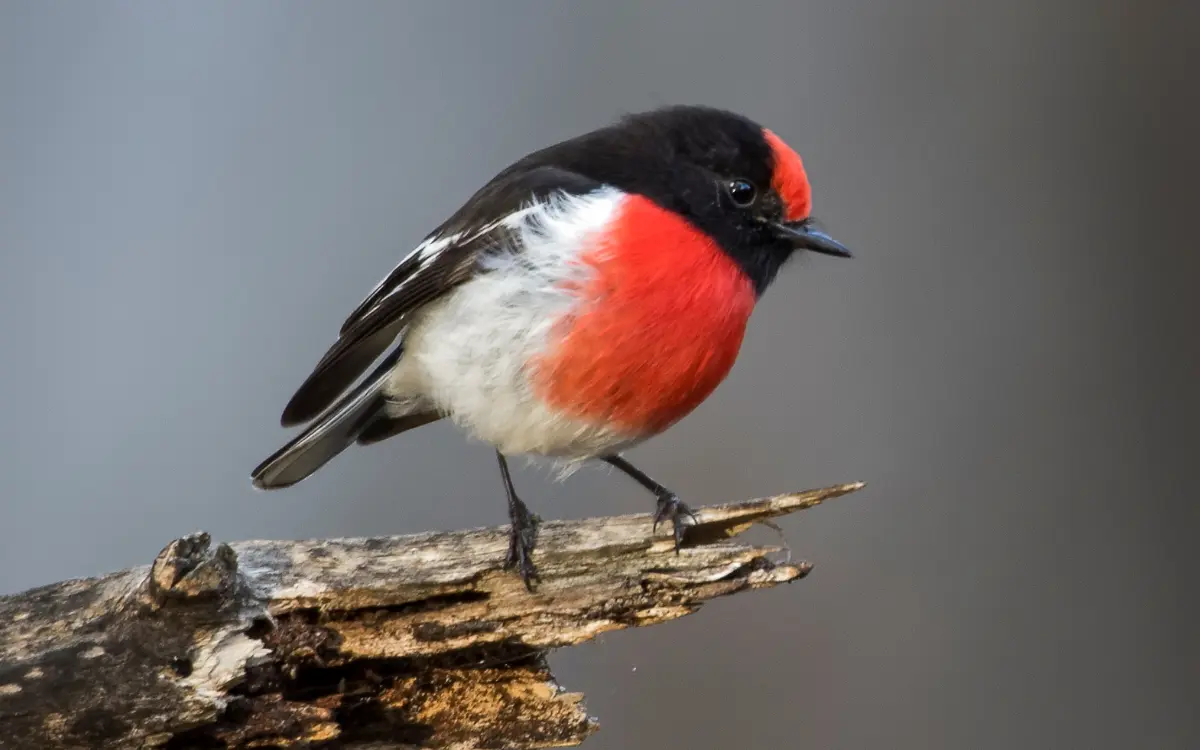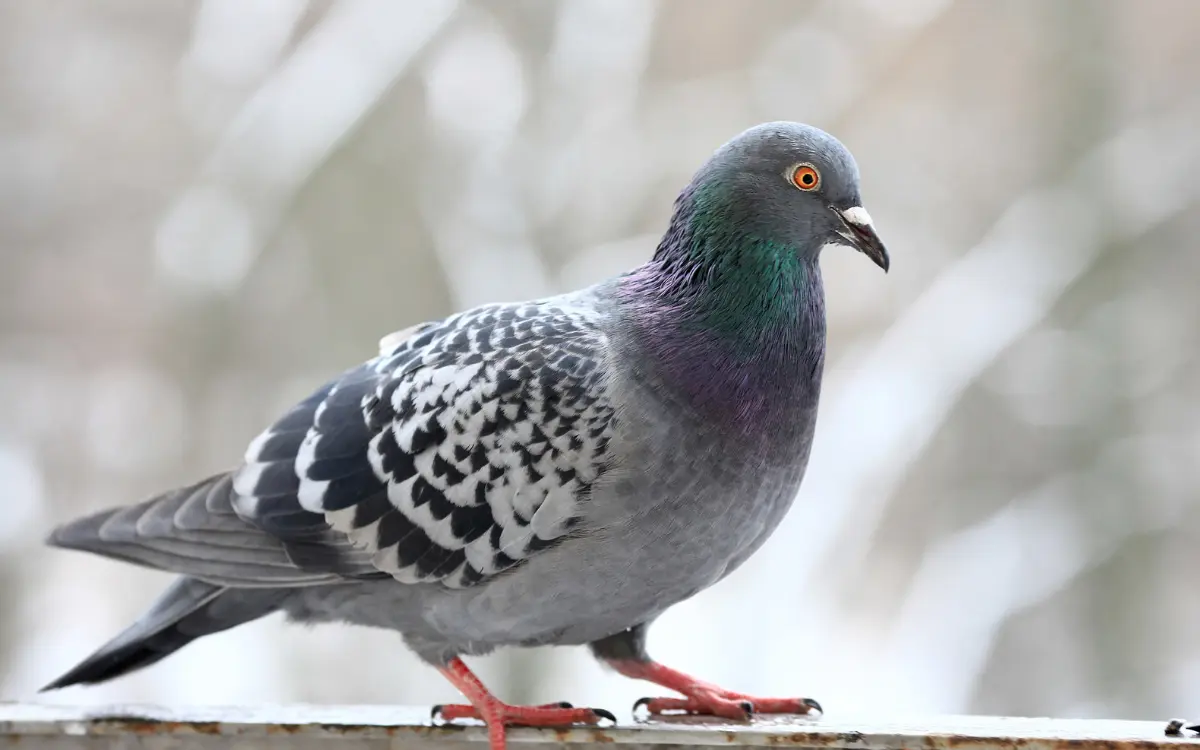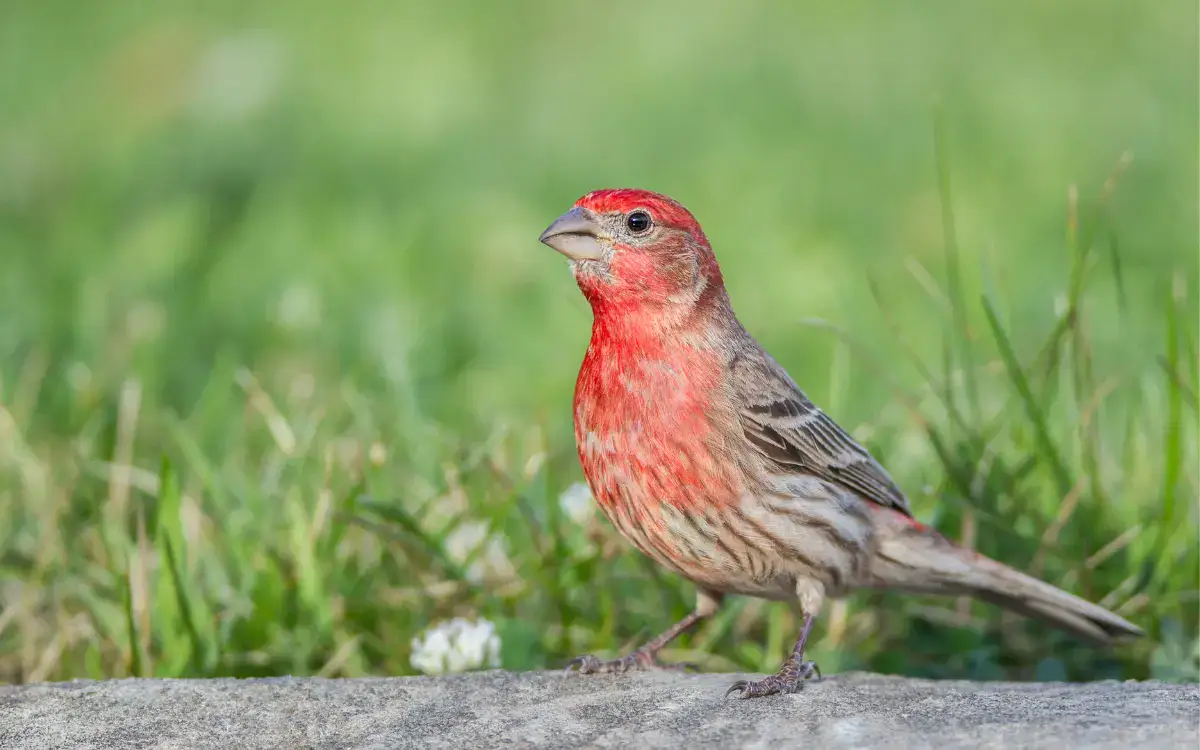How to Attract Chickadees To Your backYard?
Chickadees are delightful, active little birds known for their cheerful calls and acrobatic feeding style. These small birds are a joy to watch and are also beneficial to your garden, helping control insect pests and adding life to your yard.
If you’d like to attract chickadees to your yard, here are some effective steps to create a welcoming environment for them.
Offer Chickadee-Friendly Food
Chickadees have specific food preferences, so providing the right food sources is key to attracting them to your feeders.
Provide Sunflower Seeds: Chickadees love black oil sunflower seeds, which are packed with nutrients and easy for them to crack open. You can place sunflower seeds in tube feeders or platform feeders, which chickadees will readily visit. Avoid using sunflower seeds with shells in mixes, as chickadees may find them more challenging.
Suet for Extra Energy: Suet is an excellent energy source, especially in winter when chickadees need more calories to stay warm. You can offer plain suet or suet cakes mixed with other treats like nuts and berries. Hang suet cages or tail-prop feeders near cover, as chickadees prefer feeding in areas where they feel safe.
Add Peanuts and Mealworms: Chickadees also enjoy unsalted peanuts (shelled or chopped) and mealworms. Peanuts provide protein, while mealworms add a source of insects to their diet. Offer these treats on a platform feeder or mix them with other seeds to attract chickadees.
Use High-Quality Bird Seed Mixes: Look for bird seed mixes specifically designed for small songbirds that contain chickadee favorites like sunflower seeds, millet, and safflower. Avoid mixes with a lot of filler ingredients like wheat or milo, which chickadees tend to ignore.
Choose the Right Feeders
The type of feeder you use is important for attracting chickadees, as they prefer feeders that accommodate their small size and active feeding style.
Tube Feeders with Perches: Tube feeders with small perches are perfect for chickadees. These feeders allow chickadees to cling and pick out seeds through the feeding ports. Chickadees are agile and don’t mind hanging upside down to reach the seeds.
Suet Feeders: Chickadees love suet, and suet feeders are a great way to offer it. Choose cage-style suet feeders, which are easy for chickadees to cling to, or a tail-prop feeder that provides support while they eat. Hang suet feeders near trees or shrubs for added cover.
Platform Feeders: Platform feeders are versatile and can hold a variety of foods. Chickadees enjoy visiting platform feeders for sunflower seeds, peanuts, and fruit. Place platform feeders in areas with nearby perches, such as a tree branch, so chickadees can feel safe while feeding.
Avoid Large or Bulky Feeders: Chickadees may avoid larger feeders designed for bigger birds. Stick to feeders suited to small birds, which allow chickadees to feed comfortably without being intimidated by larger birds.
Provide a Fresh Water Source
In addition to food, a reliable source of water is essential for attracting chickadees. They need water for drinking and bathing, especially in winter when natural sources may freeze.
Birdbaths: A shallow birdbath is ideal for chickadees. Look for a birdbath no more than 1–2 inches deep, as chickadees prefer shallow water. Place the birdbath near shrubs or trees so they have quick access to cover.
Moving Water Features: Chickadees are attracted to the sound of moving water, which can make it easier for them to find a water source. Consider adding a fountain, dripper, or water wiggler to the birdbath. Moving water also helps keep the birdbath clean by discouraging algae growth.
Winter Water Options: In colder climates, water can freeze, making it difficult for birds to find fresh water. A heated birdbath or a simple de-icer can keep the water liquid even in winter. Alternatively, replace the water in your birdbath frequently to ensure that chickadees have access to fresh water year-round.
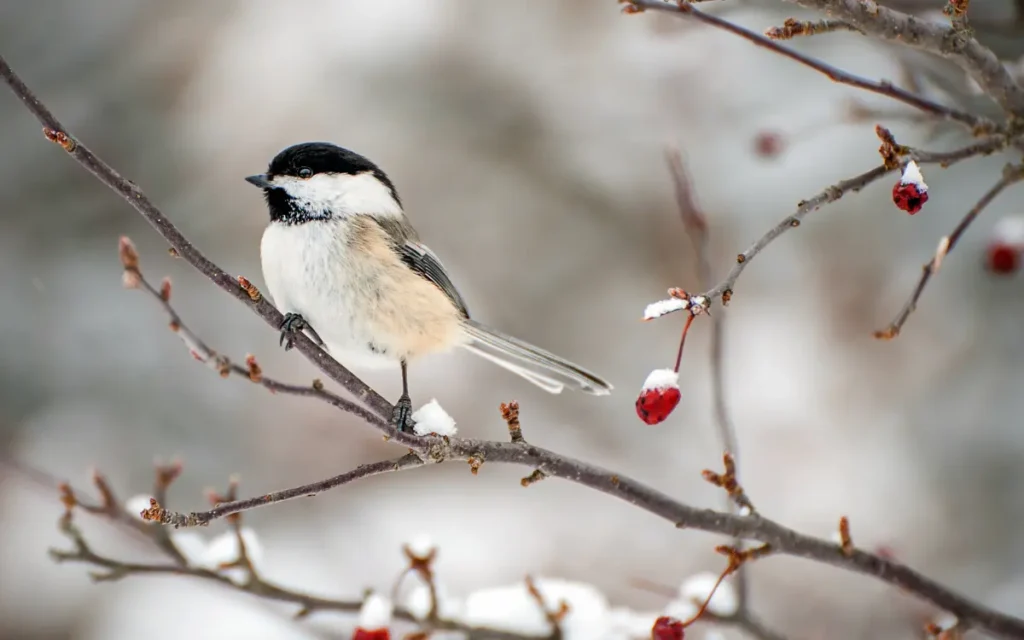
Create a Safe Feeding Environment
Chickadees are small birds and prefer to feed in areas where they feel safe from predators. Setting up a protected environment will encourage them to visit more often.
Place Feeders in Protected Areas: Position feeders near trees or shrubs, which give chickadees a quick escape route if they feel threatened. They’re more likely to visit feeders that offer cover and allow them to survey their surroundings before approaching.
Keep Cats Indoors: Outdoor cats can pose a significant threat to chickadees and other small birds. To protect these birds, keep cats indoors or supervise them when outside. If you have neighbors with outdoor cats, place your feeders in elevated spots where cats cannot easily reach them.
Use Baffles and Squirrel Guards: Squirrels can be disruptive at feeders and may scare chickadees away. To prevent this, add baffles to feeder poles or use squirrel-proof feeders. Keeping the feeders secure and free from larger animals will create a more inviting environment for chickadees.
Offer Nesting Sites and Materials
Creating nesting opportunities and providing materials can encourage chickadees to stay in your yard long-term, especially during the breeding season.
Set Up Chickadee Nesting Boxes: Chickadees will nest in small birdhouses, ideally with a 1.25-inch entrance hole. Place the box about 4–10 feet above the ground, in a quiet, shaded area near shrubs or trees. Clean out nesting boxes after the breeding season to make them ready for the next year.
Provide Nesting Materials: Chickadees use a variety of materials to build their nests, including moss, fur, feathers, and grass. You can offer nesting materials by placing them in a small mesh bag or hanging them in a nearby tree. This gives chickadees easy access to materials for constructing a cozy nest.
Leave Some Natural Cover: In addition to nesting boxes, chickadees will use natural sites like small tree cavities and dense shrubs. Consider leaving some areas of your yard with untrimmed trees or shrubs to provide natural nesting options for chickadees.
Read also:-
Plant Chickadee-Friendly Vegetation
Chickadees benefit from a diverse landscape with native plants that provide food, shelter, and nesting opportunities.
Include Native Trees and Shrubs: Trees like birch, oak, and maple attract insects, a primary food source for chickadees. These trees also provide shelter and perches. Planting native vegetation supports the local ecosystem and creates a habitat that attracts chickadees.
Add Berry-Producing Plants: Shrubs like dogwood, serviceberry, and elderberry produce berries that chickadees may snack on. These shrubs also offer cover and help create a safe environment for the birds.
Create a Layered Landscape: A mix of ground cover, shrubs, and tall trees offers chickadees various options for foraging, nesting, and protection. Layered landscaping mimics natural habitats, making chickadees feel more at home in your yard.
Provide a Safe and Quiet Environment
Chickadees are generally wary of loud noises and disturbances, so maintaining a peaceful area will help attract them.
Minimize Noise and Disturbances: Keep the area around feeders and nesting boxes low-traffic and avoid noisy activities near these spots. Chickadees are more likely to visit areas that feel calm and secure.
Control Outdoor Lights: Excessive lighting can disturb birds, especially at night. Minimize outdoor lighting near chickadee feeding and nesting areas to create a more natural environment.
Protect Against Window Collisions: Window collisions can be a risk for chickadees. To prevent this, place decals or other visible markers on large windows to make them more noticeable to birds. This is particularly important if feeders are close to your home.
Be Patient and Consistent
Attracting chickadees may take time, but consistency will pay off as they begin to recognize your yard as a reliable food and water source.
Feed Regularly and Consistently: Chickadees are creatures of habit and will remember feeding spots. Keep feeders filled with fresh food, and try to feed at the same time each day to encourage regular visits.
Keep Food Fresh and Appealing: Regularly clean and refill your feeders to ensure that the food remains fresh and free from mold. Fresh food will keep chickadees interested and coming back for more.
Enjoy Watching Their Behavior: Chickadees are fun to watch, especially as they hop between feeders, hang upside down, and cache seeds. Take the time to observe their behavior and enjoy their lively presence in your yard.
Conclusion
By providing the right food, water, nesting options, and a safe environment, you can attract chickadees to your yard and enjoy their charming company. These small birds not only bring joy but also help control insects and support the local ecosystem. With a little patience and consistent care, your yard can become a haven for chickadees and other songbirds.

